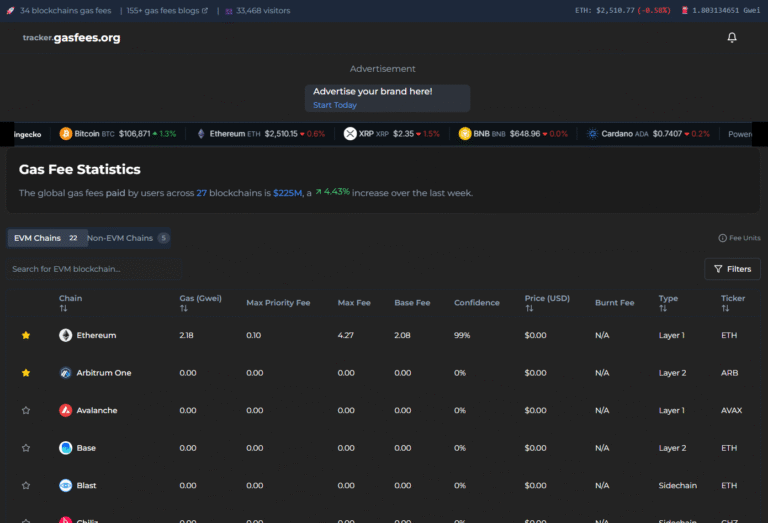What Influences Gas Fees? A Quick Guide
Imagine you’re trying to send a message to your friend through a super busy mail system where everyone is trying to send their letters at the same time. Now, to make sure your message gets there fast, you might have to pay a little extra to speed things up. In the world of blockchain, this “extra payment” is what we call gas fees. Gas fees are the cost you pay for doing things like sending coins, trading assets, or creating smart contracts on networks like Ethereum. But why do these fees go up and down?
Let’s break it down into simple bits.
What Exactly Are Gas Fees?
Network Congestion
Think of network congestion like rush hour traffic. When lots of people are trying to do things on the blockchain at the same time:
More Transactions: If there’s a big event or everyone wants to do something at once, like buying a new digital art piece, the network gets busy.
Higher Fees: Just like paying for a faster lane, you might pay more so your transaction goes through before everyone else’s.
Transaction Complexity
Every action on the blockchain isn’t the same. Some are simple, like sending XRP from one wallet to another, others are complex, like executing a smart contract:
Simple Transactions: These might cost less because they use less of the network’s resources.
Complex Transactions: Things like creating a new token or swapping multiple cryptocurrencies at once take more computational effort, hence more gas.
The Gas Price
User Set: You can decide how much you’re willing to pay. Pay more, get in quicker; pay less, wait longer.
Automatic Adjustment: Some wallets will suggest or automatically set a fee based on current network conditions.
Block Size and Gas Limit
Block Size: Each “block” in the blockchain has a limit on how many transactions or how much “work” it can handle.
Gas Limit: This is like saying, “Each car on this road can only go so fast.” Transactions that exceed this limit might have to pay more or wait for the next block.
Cryptocurrency Price
Value of the Coin: If the value of the cryptocurrency you’re using for fees goes up, the same amount of that coin will now cost you more in real money terms.
Miner/Validator Prioritization
Incentives: Miners or validators, who process transactions, have an economic incentive to pick transactions with higher fees first because it’s more profitable.
How Can You Manage Gas Fees?
Timing Your Transactions
- Off-Peak Hours: Like waiting for the crowds to thin out, doing transactions when fewer people are likely to be active can save you money.
Understanding and Setting Gas Prices
- Learn to Set: Some platforms let you set your gas price. If you can wait, you might choose to pay less during less busy times.
Using Layer 2 Solutions
- Side Chains: Think of these like side roads that take some traffic off the main highway. They can process transactions faster and cheaper, then settle them back to the main blockchain.
- Optimistic Rollups, Zk-Rollups: These are fancy methods to handle transactions off the main blockchain but still secure them on it, reducing costs.
Transaction Batching
- Combine Transactions: If you need to do multiple things, doing them in one go can sometimes be cheaper than doing each one separately.
Why Do Gas Fees Matter?
- Accessibility: High fees can make using blockchain technology expensive, which might not be great for everyday transactions.
- Scalability: It’s a sign that the network might need to scale up or find new ways to handle more transactions without skyrocketing costs.
- User Experience: If fees are too unpredictable or high, people might not want to use the network, which could slow down the adoption of blockchain tech.
The Future of Gas Fees
The blockchain world is always looking for solutions:
- Layer 2 Scaling: More and more projects are working on these to make transactions cheaper and faster.
- Network Upgrades: Ethereum 2.0, for instance, aims to dramatically lower fees by changing how transactions are validated.
- Alternative Blockchains: Some new blockchains are designed from the ground up to have lower or more predictable transaction fees.
In Conclusion
Trezor Safe 5
Not your keys—
Not your coins.

Mr. GasMan
Blockchain expert specializing in gas fee optimization and network analysis across multiple chains.





